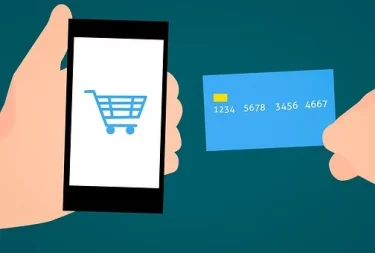By the time a shopper reaches the checkout on an ecommerce store, you might think a conversion is all but guaranteed. After all, how many brick-and-mortar customers abandon their cart while in line to pay? Online, however, checkout is arguably the most high-risk stage in the buying journey to lose a purchase-ready customer. As a retailer, it’s imperative that you create an effortless checkout experience that supports quick and easy conversions. Read on for the key dos and don’ts for easy checkout.
Why Do Shoppers Abandon Carts at Checkout?
On average, 70% of shopping carts are abandoned at checkout. On mobile, this figure jumps to an incredible 86%. Yes, some of these shoppers simply change their minds or get distracted before they complete their purchase. Sure, some are just window shopping or waiting for your next sale. But, research shows that a significant number bounce due to cumbersome checkout experiences.
In one survey, U.S. consumers said they typically abandon their carts because:
- Extra costs such as shipping and tax are too high (48%)
- The site requires them to create an account (24%)
- Delivery is too slow (22%)
- They don’t trust the site with their credit card information (18%)
- The checkout process is too long or complicated (17%)
While certain causes of cart abandonment may be beyond your control, many of the most common obstacles are completely avoidable. With a few simple changes to your checkout design and functionality, you can deliver a dramatically easier purchasing experience.
How to Streamline the Checkout Experience
Keep these seven dos and don’ts in mind to simplify your ecommerce checkout.
Do: Allow Autofill

Shoppers shouldn’t have to enter repetitive or unnecessary details during the checkout process. Support optional autofill on all of your forms and always give shoppers the ability to save their details for even faster checkout next time. No one likes manually entering copious amounts of information when they’re trying to place an order – especially not on mobile.
Don’t: Surprise with Additional Costs

An unexpected cost at checkout is one of the leading causes of cart abandonment. If you can’t offer free delivery, you need to be upfront about your shipping fees throughout your website. Don’t wait until the final stage of checkout to spring additional charges on shoppers, it’s extremely likely to result in a bounce.
Do: Make Customer Support Accessible

Many retailers push chatbots, social media links, and other customer support options throughout their site, only to remove these features at checkout. Customer support isn’t just for answering product-related questions, it can also be invaluable if a shopper has difficulty making a payment. Offer a quick and easy method of asking for assistance at every step, so customers don’t abandon their carts to find your FAQ.
Don’t: Ask for More Details Than You Need

If a shopper is halfway through the checkout process, it isn’t the time to ask them to complete a survey or create an account. By all means, make these requests on the order confirmation page, but don’t place any unnecessary steps before payment. Keep your form fields to a minimum and reduce the stages involved in your checkout as much as possible.
Do: Show Progress

Shoppers are wary of long, complicated checkouts. As part of your ecommerce checkout design, display a simple progress bar that indicates how many steps are involved in the process, and how close the shopper is to completing their purchase. This small sign of encouragement removes uncertainty and can help get impatient customers over the line.
Don’t: Limit Payment Methods

From digital wallets to “buy now, pay later,” online shoppers now expect a variety of payment options when they reach checkout. If you only accept credit cards, you are potentially excluding shoppers from making payments. Likewise, don’t make shoppers manually enter their card number if it’s possible to autofill payment details that are pre-saved by their browser.
Do: Test Recommendations

While your checkout pages should generally be kept as clean and simple as possible, some retailers find success with product recommendations displayed alongside the cart. If you decide to test this tactic, make sure the suggestions are highly relevant additions to the products already in the cart, and avoid overwhelming the shopper with options that might lead them to start browsing all over again.
Easy Checkouts Facilitate Easy Conversions
When a shopper is ready to make a purchase, the last thing they should encounter is a clunky process that stands in the way of placing their order. Cart abandonment is, unfortunately, the ever-present reality of ecommerce. But, by removing unnecessary hurdles in your checkout experience, you can reduce shopper frustration, drive down bounce rates, and maximize your chance of a conversion.




